Description
Crataeva nurvala – Health Benefits
And Side Effects
Botanical Name: Crataeva nurvala.
Other Common Names: Three leaved caper, barun, baruna, borun, crataeva, varun, bonna pithagola.
Habitat: Varuna is found throughout India, especially in sub-Alpine zones along streams and rivers.
It prefers a wet soil with a pH of 7, with abundant sunlight. It is found in abundance in Kerela, Madhya Pradesh, Bengal, and Assam.
Varuna is frequently found planted near temples, where it is cultivated for its healing qualities.
Plant Description: Crataeva nurvala is a medium-sized, deciduous tree which may reach a height of 50 feet. The bark is smooth and brown while the branches have white patches tinged with purple and yellow.
The leaves of the varuna are trifoliate, 8-12 cm long, with oval leaflets. The flowers are greenish-white, light yellowish or creamy colored, and are fragrant. The plant flowers in March and fruits in June.
The fruits are ovoid berries, 2.5 cm in diameter, resembling a lemon and ripening to a red color.
Plant Part Used: Bark, root bark, and leaves.

Therapeutic Uses, Benefits, and Claims of Varuna
The key constituents of crataeva nurvala are alkaloids; triterpenes; tannins; saponins; flavonoids; plant sterols; and glucosilinates.
The main health actions of crataeva nurvala are diuretic, antilithiatic, rubefacient (reddening the skin by producing hyperemia) and anti-inflammatory.
The bark of varuna is believed to have antioxidant, contraceptive, anti-inflammatory, antimicrobial, and urinary-renal supportive qualities, the root is laxative and lithinotriptic and the leaves are believed to be stomachic and tonic.
Crataeva nurvala is one of the best litholytic herbs (ability to break up stones).
Scientific research has indicated that a constituent of varuna, lupeol, deactivates the enzyme glycolate oxidase, reducing the body’s production of oxalates which combine with calcium to form kidney stones.
Additionally, varuna is used as a natural diuretic as it also could hinder kidney stones formation.
Crataeva nurvala is an important Ayurvedic herb that is especially valued for its effectiveness in the treatment of renal conditions.
Varuna is used by traditional Ayurvedic herbalists to increase appetite while stimulating digestion and elimination and also as an herbal treatment for flatulence and abdominal pain.
Varuna is also discussed in the ancient Vedic literature as an important herb for use as a blood purifier.
The bark of the varuna is believed to be especially effective when used to treat infections of the urinary tract.
Crataeva nurvala is believed to relieve difficulty in urination caused by enlarged prostate and it has been used traditionally as a natural herbal treatment in urinary calculi, dysuria (painful urination) and cystitis.
Varuna is often used topically to dilate superficial capillaries and stimulate circulation and scientific research has demonstrated that varuna may support the cardiovascular system by maintaining the suppleness and openness of the arteries.
Taken internally, varuna is used to reduce fever and a decoction made from varuna leaves has also been used as a natural remedy for fever and associated delirium.
Crataeva nurvala is used as a cholegogue (promotes the discharge of bile from the system), anthelmintic (expels worms) and anti-amoebic in both intestinal and hepatic infestations.
Varuna is considered to be a useful herb for anorexia, tumors and liver disorders and externally, varuna is used as a poultice for the treatment of cervical adenitis, abscess, enlarged spleen, rheumatic joint pain, and edematous wounds.
The fresh juice of leaves of varuna is commonly used as a bitter tonic.
Dosage and Administration
Varuna may be used externally as a poultice or taken internally in various forms – either as a tea or a tincture.
Topical leaf paste (practitioner directed): once a day as directed,
Tea: 50 ml twice a day.
Tincture: 200 mg orally twice a day (standardized to 1.5% triterpene lupeol).

Crataeva nurvala : Flowers
Side Effects and Possible Interactions of Varuna (Crataeva Nurvala)
Varuna bark and root appear to have very little evidence of toxicity when used in normal dosages. Herbal medicine is not meant to be an alternate or replacement for knowledgeable medical recommendation or care.
It should always be taken as per the instructions or directions of the physician or healthcare provider who is recommending its use.
Some reports indicate that topical leaf applications may cause blistering when used on a sensitive skin in humans.
Barna, Crataeva nurvala , برنا
ماہیت ۔
ایک بڑا درخت ہے۔جس کے پتے پر برچھی نما بیل کے پتوں کی مانند ایک شاخ میں تین تین لگتے ہیں۔شکل میں پیپل کے پتوں سے مشابہ لیکن ان سے چھوٹے ہوتے ہیں۔اس کو اپریل مئی میں خوبصورت پھول لگتے ہیں۔پھل گول لیموں سے چھوٹا جوکہ خام حالت میں سبز اورپکنے کے بعد سرخ ہوجاتا ہے۔چھال کا رنگ باہرکی طرف سے بھورا ،اندر کی طرف سے سبز پھول سفید پتے کی رنگت اوپر کی طرف سے گہری سبز اور نیچے کی طرف ہلکی سبز ۔
ذائقہ ۔ پتے پھل اور پھول تلخ جبکہ پھل پکنے کے بعد قدرے شیریں ہوجاتاہے۔
مقام پیدائش ۔ پاکستان میں خصوصاًدریائے راوی کا مشرقی علاقہ مالا بار ،ہندوستان میں آسام اور بنگال کے گرم حصوں میں پایاجاتا ہے۔
مزاج ۔ گرم تین خشک درجہ دوم ۔
افعال ۔ مدربول،مفتت سنگ ،محلل و منفج اورام ۔
استعمال ۔
پوست درخت برناکو عسر بول کو دور کرنے اور گردہ ،مثانہ کی پتھری اور رنگ کو نکالنے کیلئے پانی میں جوش دے کر پلاتے ہیں۔پوست یا پتوں کو پانی میں پکا کر اورام کی تحلیل کیلئے باندھتے ہیں یا لیموں کے رس یا سرکہ میں پیس کرضماد کرتے ہیں۔اس کا ضماد پندرہ منٹ میں جلد کو لال کردیتا ہے۔اور اگر زیادہ دیر جلد پر لگا رہےتو آبلہ پیدا کرتا ہے۔سمن مفرط کیلئے اس کے پتوں کا ساگ بنا کر کھایا جاتا ہے۔کون کن میں برنا کے پتوں کا ریاحی میں استعمال کرتے ہیں۔بعض وئید برنا کے تازہ پتے دوتولہ نصف سیر پانی میں جوش دے کر جب نصف پاؤرہ جائے توبکری کا دودھ دس تولہ اور کھانڈ بقدر ذائقہ ملاکر دن میں تین بار تپ دق کے مریضوں کو استعمال کراتے ہیں ۔
فوائد خاص ۔ پیشا ب کو جاری کرنے کیلئے اور سنگ گردہ کیلئے ۔
مقدارخوراک ۔ تین سے پانچ گرام




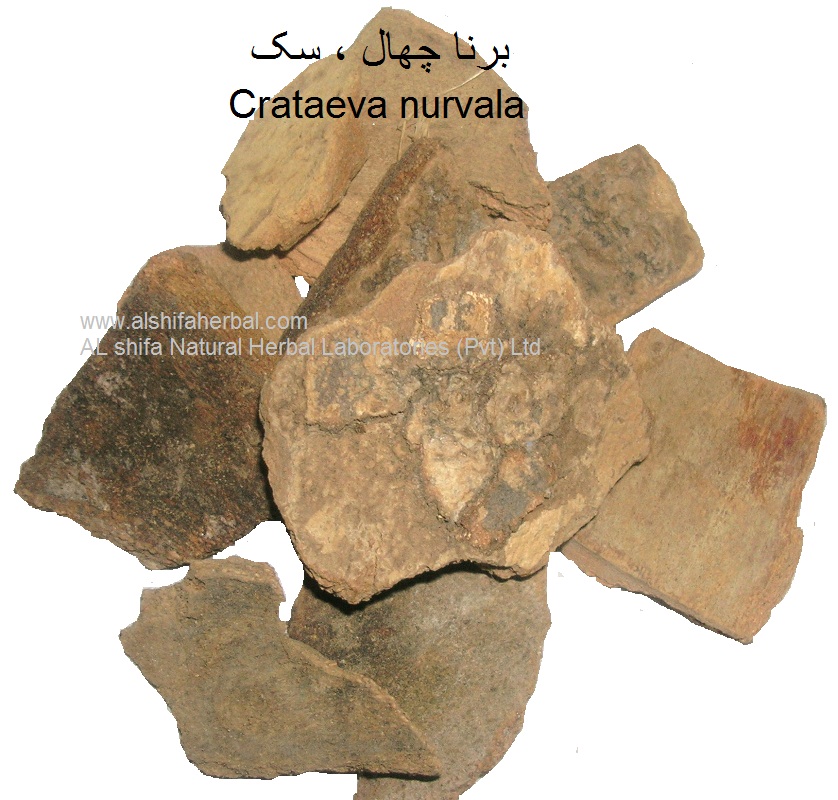
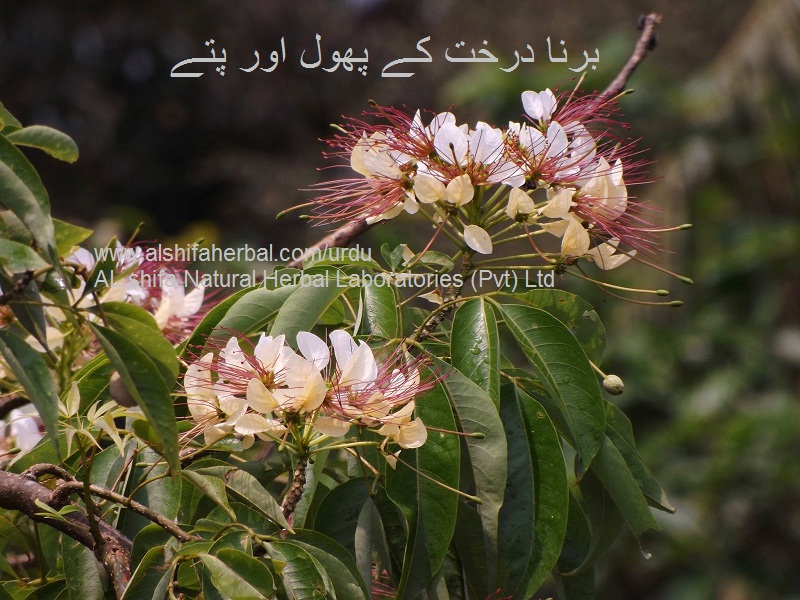
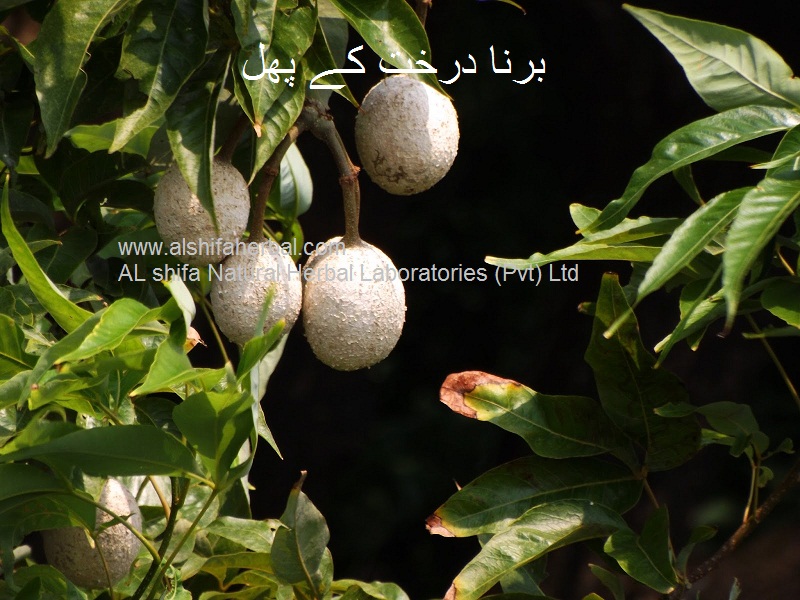
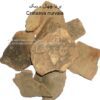

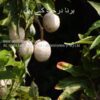


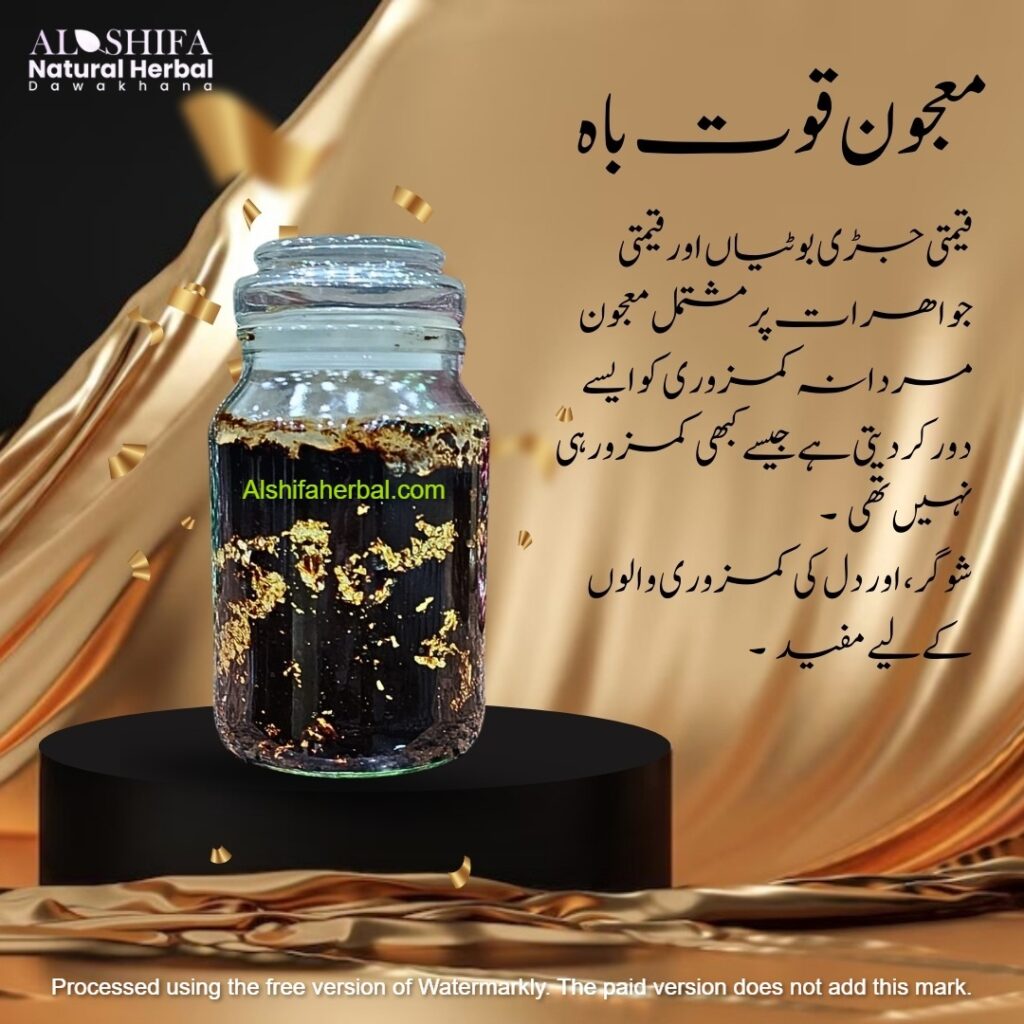
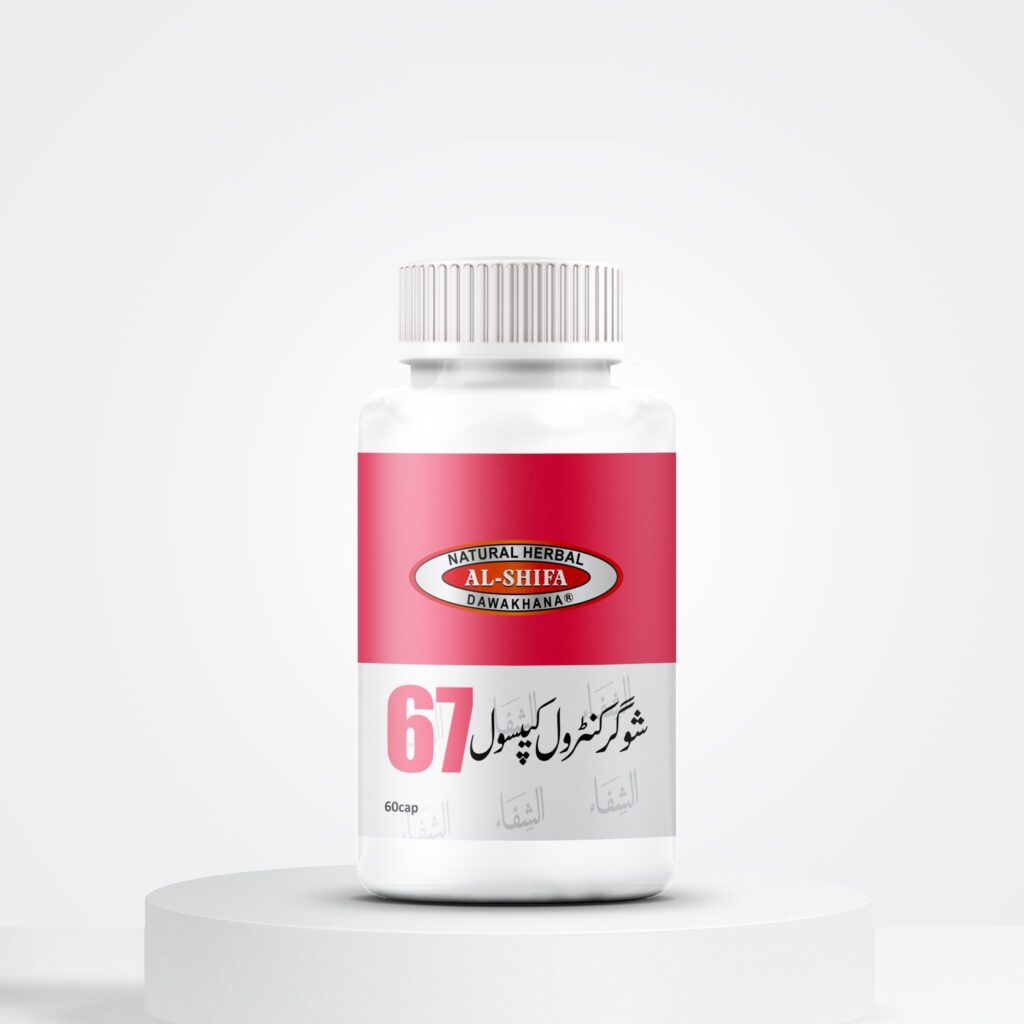
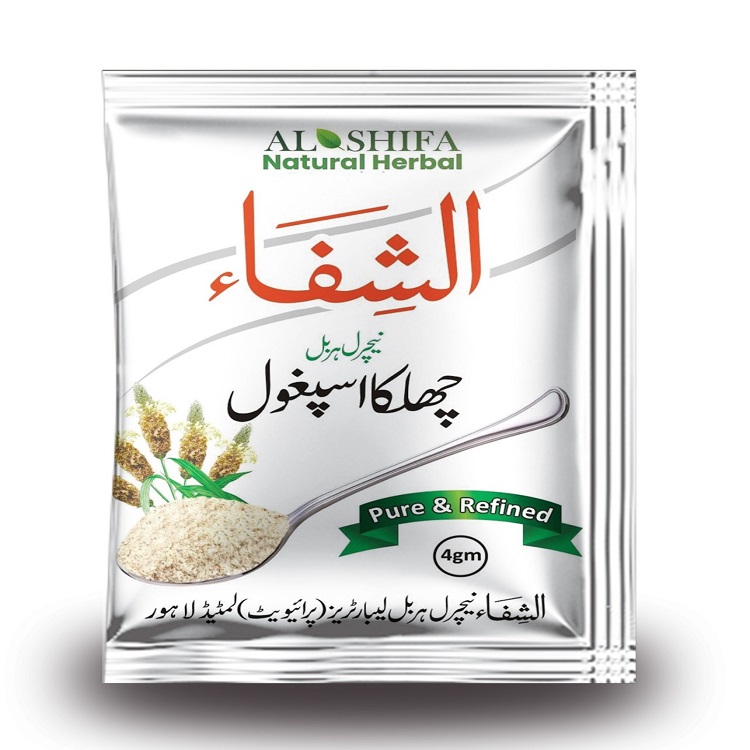



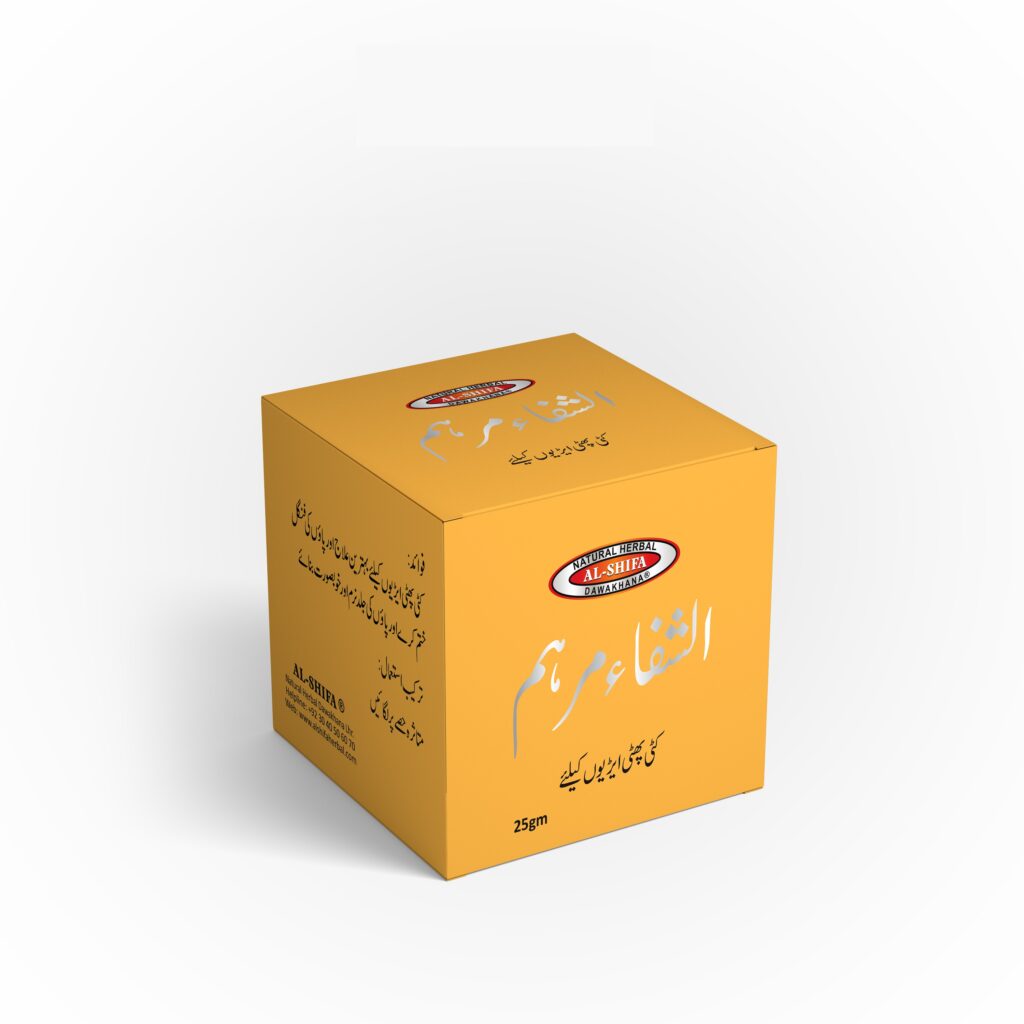


Reviews
There are no reviews yet.